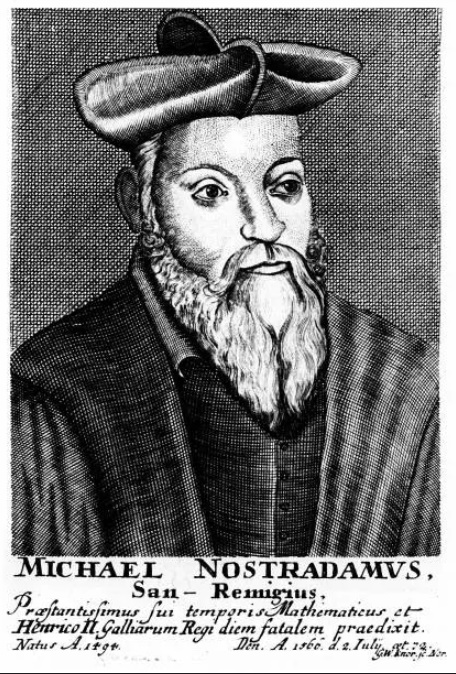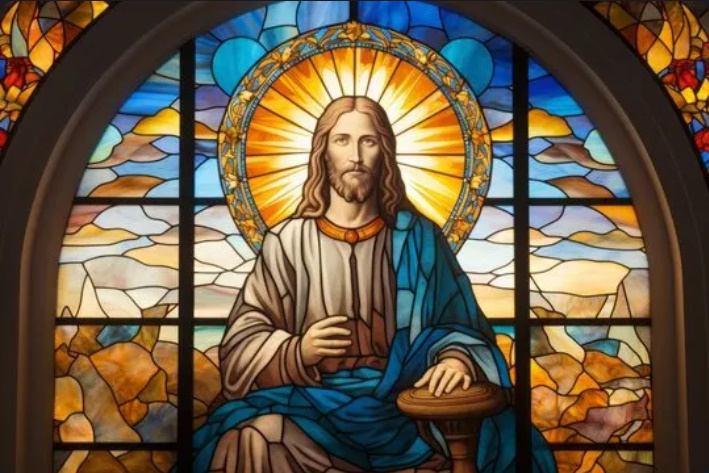
What is Occulted Knowledge or The Occult, and Who Practices it?
In Short, WE ALL DO. Including you. Do Christians practice the occult? Most Certainly. YES, THEY TOO PRACTICE THE OCCULT AND UTALIZE OCCULTED KNOWLEDGE, DAILY. They simply address it as something else. Christians primarily do this in two ways.
- By simply being alive and living in the world today Christians engage with the Occulted Sciences on a near minute by minute basis. Cell phones, Electricity, Government, Mathematics, Pharmacology, Accessing a weather report, or using anything metal.
- Within their Christian belief system, through culturally and ecclesiastically approved religious rituals and held belief practices. (Covered in detail below.)
I suppose it can be argued that they “experience” the occult more so than they “practice” it, but this depends more on the flavor of Christianity. Or more correct still, that the clergy is trained in the “practice” of the occult, while the parishioners “experience” it. Still, they most certainly collectively revel in the wonderment and splendor of the occulted mysteries while claiming that it is sourced from “their God,” The “One True God,” the God of the Holy Bible. You see, this makes it Holy and OK. Oh, how they love to point the finger though. They need to, actually. It’s a tenant of monotheism. So, how can it be stated that Christians practice the Occult? Let us explore the MANY ways.
The Occult and Occulted Knowledge is Ubiquitous and Literally Underpins the Foundation of Civilization. What’s more, this Knowledge is Only Occulted Until We Grow Through and Past it, at Which Point, it Becomes Mainstream Knowledge. At Which Point it is Disseminated to the Profane, and the Frontier of the “Occult” is Pushed Further Out.
Occulted Knowledge Includes:
Astronomy, Chemistry, Medicine, Psychology, Meteorology, Optics, Geology, Botany, Mathematics, Anatomy, Pharmacology, Cryptography, Physics, Metallurgy, Etc.
But this is sciences you say. Sure, that’s what we call it now, however at one time, what little that was known of these sciences was coveted knowledge. Knowledge reserved for kings and queens, wise men, mystics, advisors, and magicians. Here’s a short list of known Magi in history. Some of which were incorporated into Christianity.
- Merlin (Myrddin) – Britain (Mythical/Historical)
- A legendary figure in Arthurian lore, possibly inspired by the 6th-century Welsh bard Myrddin Wyllt or other Celtic figures. Advisor to King Arthur, orchestrating his rise (e.g., Sword in the Stone) and guiding Camelot’s destiny. Known for prophecy, shapeshifting, and spell-casting, Merlin was depicted as a wizard with supernatural powers, possibly born of a demon and a mortal woman. While largely mythical, Merlin may draw from Celtic druids or Romano-British leaders like Ambrosius Aurelianus, whose wisdom seemed magical in a turbulent era. Embodies the archetype of the magician-advisor, blending wisdom with mysticism, as discussed in prior conversations about Merlin and alchemical symbolism.
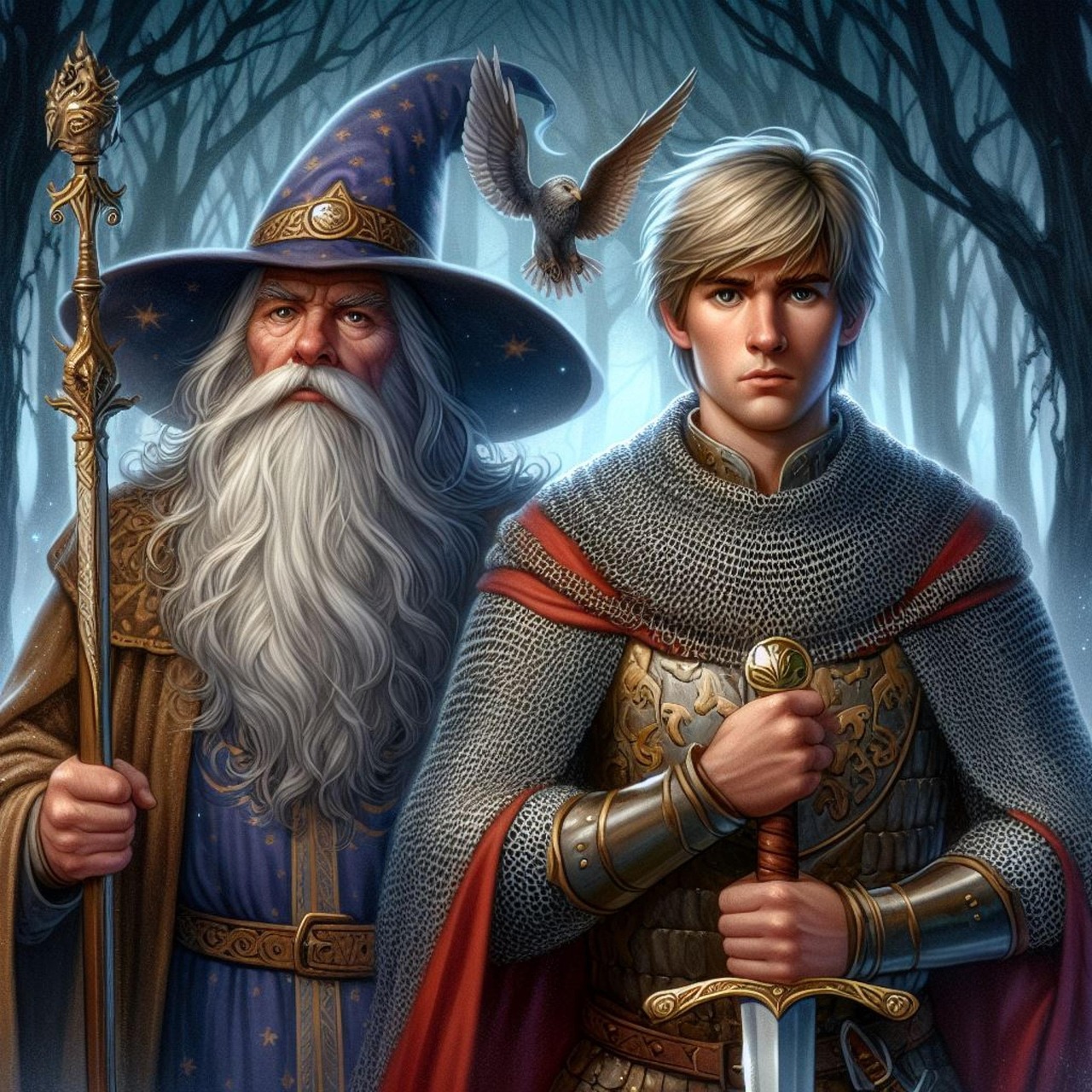
2. Joseph – Egypt (Biblical, c. 19th–17th Century BCE?)
- A figure from the Book of Genesis in the Hebrew Bible and Christian Old Testament. Advisor to Pharaoh, rising from slavery to vizier after interpreting Pharaoh’s dreams about famine and abundance. His ability to interpret dreams and foresee the future was seen as divinely inspired, akin to magical divination in ancient Egypt, where such skills were revered. While primarily a religious figure, Joseph’s story may reflect the influence of Semitic advisors in Egyptian courts, where dream interpretation was a prized skill. His wisdom and foresight saved Egypt, aligning with the archetype of the sage who uses mystical insight for statecraft.
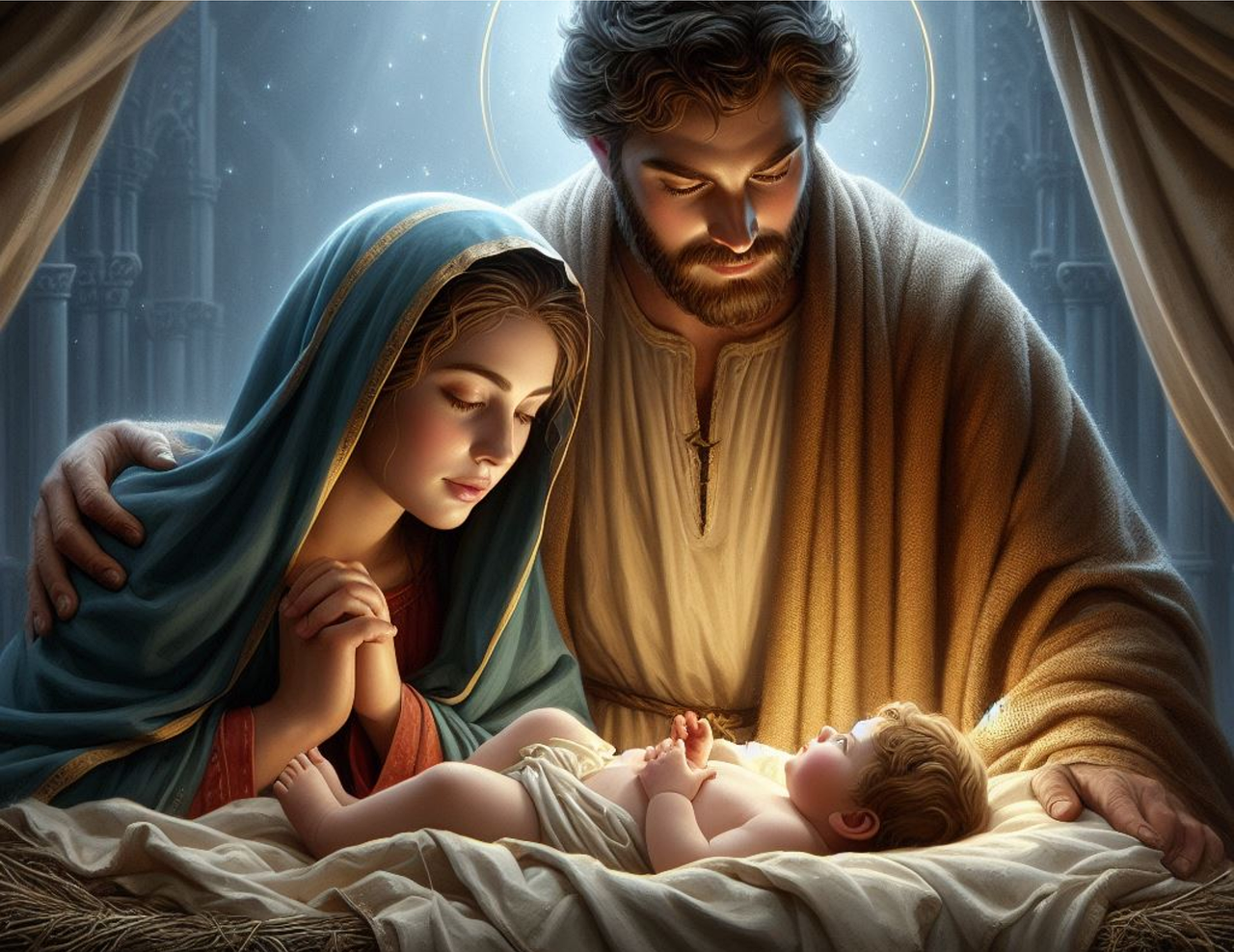
3. Daniel – Babylon and Persia (Biblical, c. 6th Century BCE)
- A prophet in the Hebrew Bible and Christian Old Testament, serving in the courts of Babylonian and Persian kings. Advisor to kings like Nebuchadnezzar II and Darius the Great, interpreting dreams and visions, and surviving trials (e.g., the lions’ den). Daniel’s ability to decipher dreams, read mysterious writings (e.g., the “writing on the wall”), and receive divine visions led to perceptions of supernatural power, akin to a magician’s abilities. Likely a legendary figure, though possibly inspired by Jewish exiles who rose to prominence in Babylonian courts, blending wisdom with prophetic gifts. Represents the wise man whose spiritual insight influences secular rulers, paralleling Merlin’s advisory role.
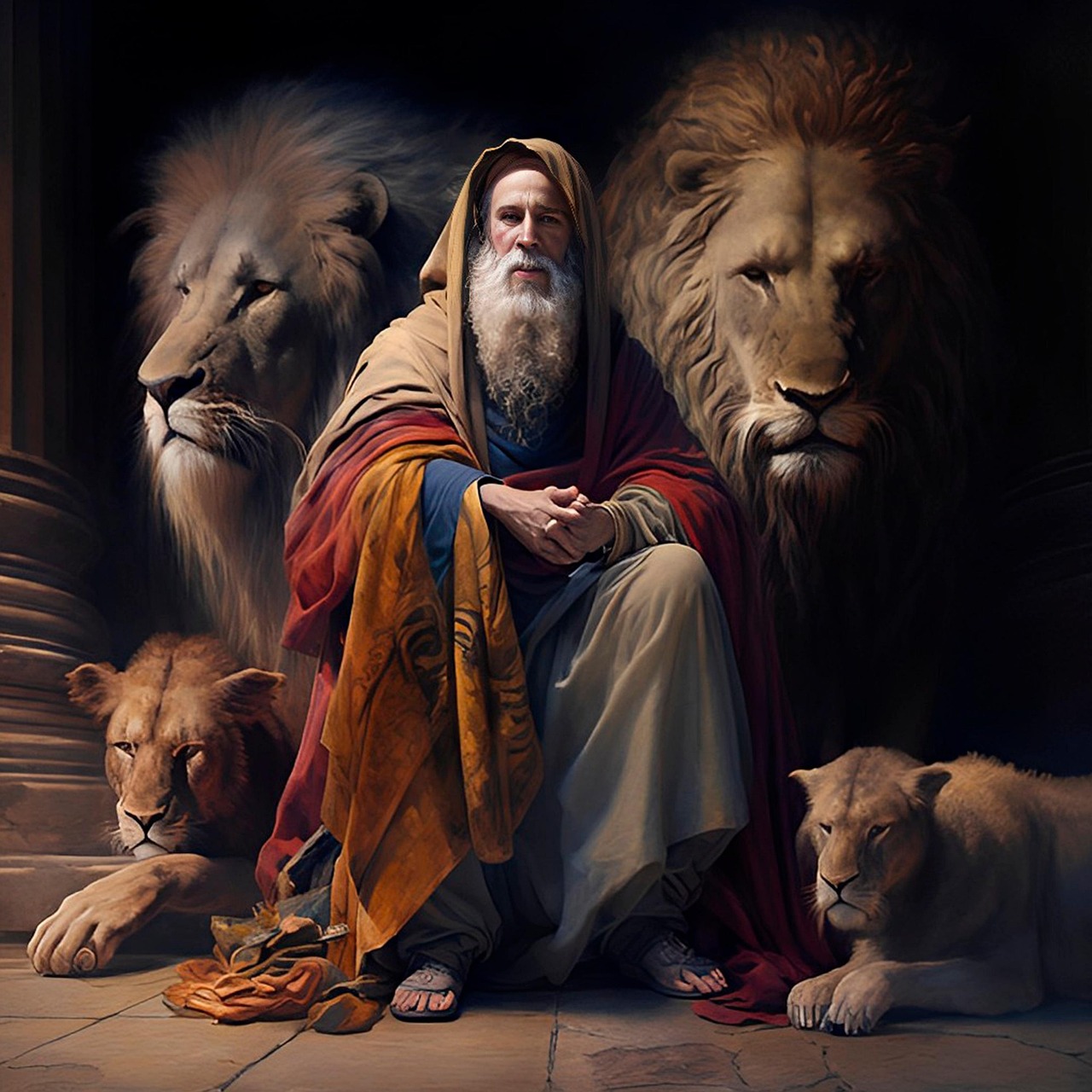
4. Apollonius of Tyana – Roman Empire (1st Century CE)
- A Greek philosopher and mystic in the Roman Empire, often compared to Jesus due to his miraculous deeds. Traveled widely, advising rulers and philosophers, including Roman emperors like Vespasian, though not a formal court advisor. Credited with miracles (e.g., healing, teleportation, raising the dead), Apollonius was seen as a sorcerer or magician by contemporaries, blending Neopythagorean philosophy with occult practices. A historical figure documented by Philostratus in Life of Apollonius, though accounts are embellished with legendary elements. His blend of wisdom, mysticism, and influence over elites mirrors the magician-king dynamic, with a reputation for supernatural feats.

5. Al-Hakim bi-Amr Allah – Fatimid Caliphate (985–1021 CE)
- Context: The sixth Fatimid caliph, ruling Egypt and parts of the Islamic world, known for his esoteric knowledge. As a caliph, he was both ruler and spiritual leader, but he relied on wise men and was himself seen as a mystic due to his Druze-influencing teachings. Al-Hakim’s erratic behavior, nocturnal wanderings, and claims of divine insight led some to view him as a magician-like figure with esoteric powers. His court included scholars and alchemists. A documented historical figure, though his mystical reputation grew in Druze tradition, which venerates him as a divine incarnation. Represents a ruler-advisor hybrid, whose own mystical aura attracted wise men, echoing the alchemical sage archetype.
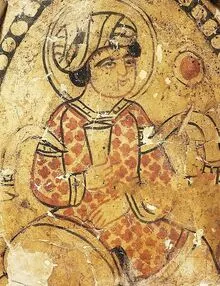
6. John Dee – England (1527–1608/9)
- Context: An English mathematician, astrologer, and occultist during the Elizabethan era. Advisor to Queen Elizabeth I, providing astrological guidance, navigational expertise, and political counsel, while promoting England’s imperial ambitions. Dee’s work in alchemy, angel summoning (with Edward Kelley), and scrying (using a crystal ball) earned him a reputation as a magician. His “Enochian” system of angelic communication was seen as sorcerous. A well-documented scholar whose library and experiments made him a Renaissance polymath, though his occult pursuits fueled his mystical image. Dee’s blend of science, mysticism, and political service mirrored that of Merlin, making him a historical “wizard” in a royal court.
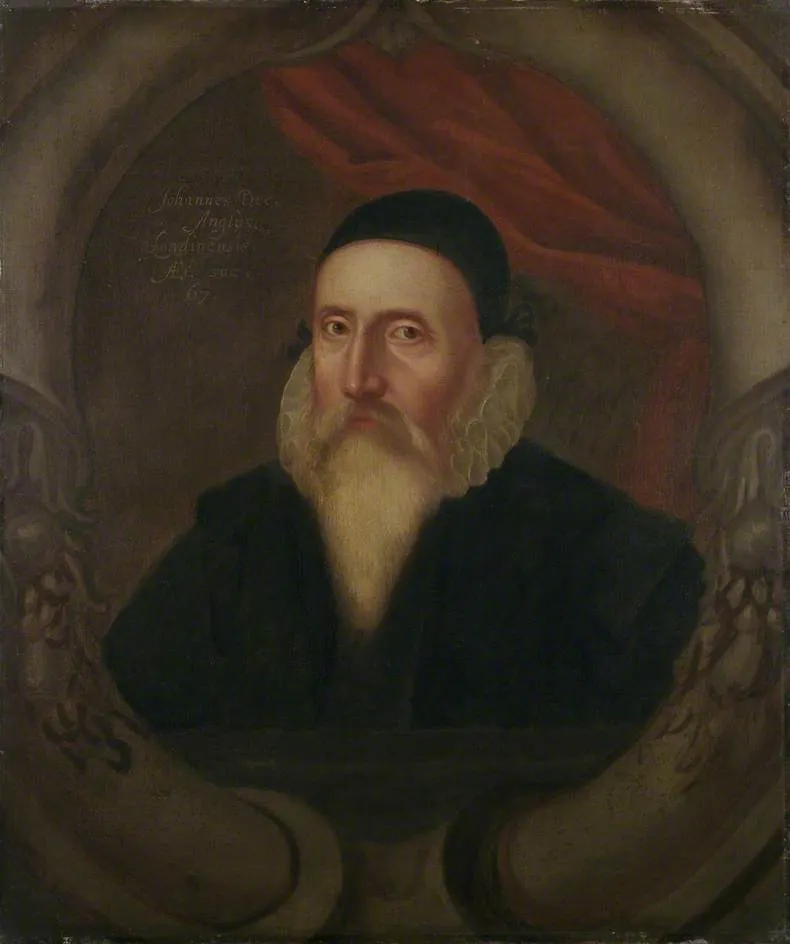
7. Roger Bacon – England (c. 1214–1292)
- A Franciscan friar and philosopher in medieval England, known as Doctor Mirabilis (Wonderful Teacher). While not a direct court advisor, Bacon’s works influenced kings and popes, and he advised on scientific and military matters, including optics and gunpowder. His experiments in alchemy, optics, and astronomy, along with legends of creating a “brazen head” (a talking statue), led to rumors of sorcery, despite his Christian framework. A historical scholar whose writings on empirical science were groundbreaking, though his esoteric interests sparked magical associations. Bacon’s fusion of wisdom and proto-scientific “magic” parallels the sage-magician archetype, serving higher authorities indirectly.
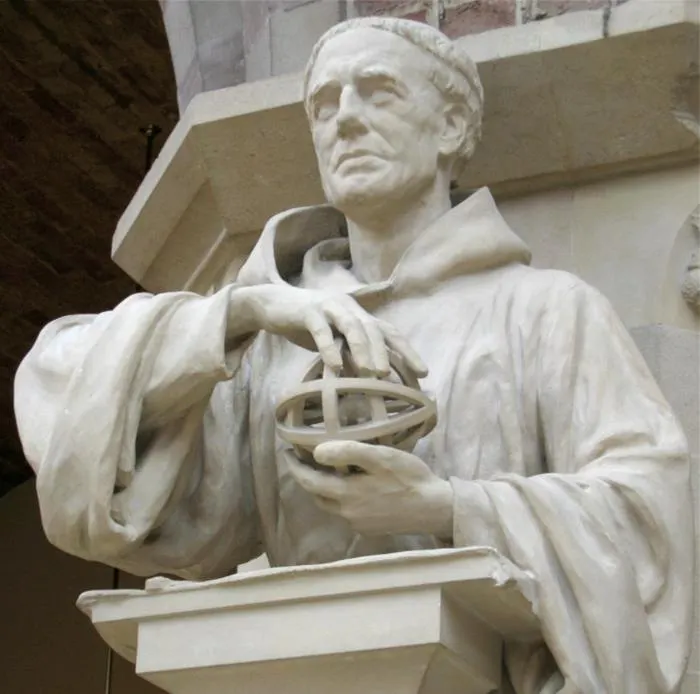
8. Nostradamus (Michel de Nostredame) – France (1503–1566)
- A French astrologer, physician, and seer during the Renaissance. Served as a physician and astrologer to the French court, particularly under Catherine de’ Medici, wife of King Henry II, providing horoscopes and prophecies. His cryptic Les Prophéties, a collection of quatrains predicting future events, cemented his image as a mystical visionary, often seen as a magician by contemporaries. A documented figure whose medical and astrological work was respected, though his prophetic claims fueled a magical aura. Nostradamus’s role as a court prophet echoes Merlin’s foresight, blending practical service with mystical influence.
In historical contexts, “magic” nearly always encompassed advanced knowledge (e.g., astronomy, alchemy, medicine) that seemed miraculous to the unlearned, leading to these figures’ reputations as magicians. Keep in mind that many of these men operated in eras where science, religion, and mysticism were intertwined, making their wisdom/Gnosis appear supernatural. For example, alchemy, as discussed in the Sword in the Stone metaphor, was both a spiritual and proto-scientific pursuit.
For instance, Merlin, as a mythical advisor, parallels these figures’ roles as wise counselors with mystical reputations. The Pope, while a spiritual leader, differs as a ruler rather than an advisor, but shares the aura of divine authority seen in figures like Daniel or Al-Hakim. These men align with Tarot archetypes like the Magician (mastery, as in Dee), Hermit (wisdom, as in Bacon), or High Priestess (intuition, as in Nostradamus), as discussed in the Tarot-political figures analysis. Some figures (Joseph & Daniel) are primarily biblical, with debated historicity, while others (Dee, Nostradamus) are well-documented, yet all gained magical reputations due to their extraordinary influence.
Daniel 2:2 (KJV) – Then the king commanded to call the magicians, and the astrologers, and the sorcerers, and the Chaldeans, for to shew the king his dreams. So they came and stood before the king.
How Christians Practice the Occult
Christianity has a long standing history of condemning practices of occulted knowledge, which I find insanely hilarious as this knowledge has been widely adopted by the clergy itself. What’s more, it has long been integrated throughout western civilization and can be found as a fixture within culture, acidemia, science, medicine, and government.
Although the Bible does generally condemns occult practices, you can still find our Biblical hero’s practicing the occult from time to time, such as casting lots (Acts 1:26) or prophetic visions—resemble occult methods in form, though they are distinguished by their divine source, or attribution to God. It is obvious that the Bible condemns any power or source of power that is known or sought out that is independent of or attributed to anything other then their ONE TRUE GOD.
Note that the Bible doesn’t state that this knowledge/power doesn’t exist, but rather that experiencing this knowledge/power either apart from God or while not attributing the power to God is EVIL, CONDEMNABLE and OF THE DEVIL’S HAND.
While in fact, the Bible is nothing more than a library of collected works, most of which predating the biblical times by thousands of years, stories and creation myths which are full of wonderment, heroes, and magick. The Christians simply cherry-picked what they needed and rolled it into a new SOLAR WORSHIPING religion while condemning anything therein which took away from it’s authority/power. It really is this simple.
- Divination and Soothsaying
- Example: In Leviticus 19:26, the Israelites are commanded, “Do not practice divination or seek omens.” Similarly, Deuteronomy 18:10-12 condemns practices like divination, sorcery, interpreting omens, or consulting mediums as “detestable” to God.
- Context: Divination involved attempts to predict the future or gain hidden knowledge through methods like reading animal entrails, casting lots, or interpreting dreams. These were common in surrounding pagan cultures, but the Bible prohibits them, emphasizing reliance on God’s guidance instead.
- How Christians Do It:Dream interpretation. Randomly opening the Bible for guidance to discern God’s will.
- Witchcraft and Sorcery
- Example: Exodus 22:18 states, “You shall not permit a sorceress to live.” In 1 Samuel 28, King Saul consults the Witch of Endor, who summons the spirit of the prophet Samuel.
- Context: The Witch of Endor incident shows Saul’s desperation, as he seeks a medium despite knowing such practices are forbidden. The narrative portrays this as a sinful act, and the summoned spirit delivers a message of judgment. Sorcery was associated with invoking supernatural powers outside God’s authority.
- How Christians Do It:Spiritual Warfare – including Performing elaborate rituals, such as “binding” demons, casting out spirits, or anointing homes with oil, with formulaic prayers or objects believed to have supernatural efficacy. Blending Christian prayers or symbols with local folk magic, such as using herbs, candles, or incantations for healing, protection, or curses, while invoking Jesus or saints. Modern Christian Manifestation churches, AKA Prosperity Gospel / Name it, Claim It”. Need I say more? biblical numerology. Christian astrology. Candle Magic. Mormon Magic Underwear.
- Necromancy (Communicating with the Dead)
- Example: Isaiah 8:19 warns against consulting “mediums and spirits, who whisper and mutter,” instead of seeking God. The Saul and Witch of Endor story (1 Samuel 28) is a key instance of necromancy.
- Context: Necromancy, or attempting to contact the dead, was practiced in ancient Near Eastern cultures but condemned in Israelite law as a violation of God’s sovereignty over life and death.
- How Christians Do It: Praying to and receiving instruction from JESUS CHRIST, whom they believed lived and died for their sins. Jesus was flesh, they he died. Seeking guidance from a dead man is literally Necromancy.
- Astrology and Star Worship
- Example: Isaiah 47:13-14 mocks Babylon’s astrologers, saying, “Let your astrologers come forward, those stargazers who make predictions month by month… they cannot save themselves.” Deuteronomy 4:19 warns against worshiping the sun, moon, or stars.
- Context: Astrology, the belief that celestial bodies influence human events, was prevalent in ancient Mesopotamia. The Bible rejects it, portraying reliance on stars as idolatry and futile compared to God’s power.
- How Christians Do It: Ummmmm, EVERYTHING IN CHRISTIANITY. All holydays, observances and prophecies. Christianity is LITERALLY A SOLAR WORSHIPING RELIGION. Oh, and don’t forget about Horoscopes, especially as it relates to love and sexual compatibility.
- Magic and Magicians
- Example: In Exodus 7-8, Egyptian magicians replicate some of Moses’ miracles (e.g., turning staffs into snakes) but are ultimately outdone by God’s power. In Acts 8:9-11, Simon the Sorcerer amazes people with his magic but is confronted by Peter.
- Context: Magic in these contexts refers to supernatural acts performed through rituals or powers not from God. The Bible contrasts these with divine miracles, portraying magicians as limited or deceptive.
- How Christians Do It: See Witchcraft Above.
- Dreams and Visions as Divination
- Example: In Genesis 41, Joseph interprets Pharaoh’s dreams, but he credits God for the ability. Contrastingly, Jeremiah 23:25-32 condemns false prophets who claim divine dreams to mislead people.
- Context: While God sometimes communicates through dreams (e.g., Joseph, Daniel), the Bible warns against using dreams for unauthorized divination or false prophecy, emphasizing discernment.
- How Christians Do It: Visions and answers from GOD during their personal prayers.
- Demonic and Spiritual Entities
- Example: In 1 Kings 22:19-23, a “lying spirit” is sent to deceive false prophets. In the New Testament, Acts 16:16-18 describes a slave girl with a “spirit of divination” who is exorcised by Paul.
- Context: The Bible acknowledges spiritual beings, including demons, that can influence humans. Occult practices like divination are sometimes linked to demonic forces, which are portrayed as subordinate to God’s authority.
- How Christians Do It: Christians have incorporated the concept of demons into their religion, but make no mistake, the concept of Demons long predate Christianity. If fact, they go back to the first religion, Shamanism. This tells me that Demons are a natural phenomenon of the creator (they are timeless and without a manufacture date)
- Amulets and Superstitious Practices
- Example: Ezekiel 13:18-21 condemns women who sew magic charms and use veils for “hunting souls.” These likely refer to amulets or talismans used in rituals.
- Context: Such practices were common in ancient cultures for protection or cursing. The Bible criticizes them as false securities that lead people away from trusting God.
- How Christians Do It: The Holy Cross, Crucifix, Rosary Beads, Saint Medals, Scapular, Ichthys, Cove Pendant, Holy Relic Pendants, Jerusalem Cross, Alpha and Omega Pendant, Chi-Rho Pendant. Wearing these religious amulets for protection. Knocking on wood. Avoiding certain activities (e.g., sewing, cutting hair, or working) on Good Friday or other holy days to prevent bad luck. Burying St. Joseph Statues to sell a house. Throwing salt or using salt for protection. Avoiding the number 13. Crossing fingers. Using holy water or blessed objects for protection. Prayers and Rituals for specific outcomes.
It would appear that the Christian god truly is a JEALOUS GOD.
(See the red highlighted words above)
It would also appear that the progenitors of Christianity wished to create a monopoly on all metaphysical knowledge and practices. And in doing so, demonized anyone who either knew of or practiced these sciences outside of the authorized Christian churches.
The Bible generally condemns occult practices, associating them with idolatry, rebellion, or reliance on powers other than God (e.g., 2 Kings 17:17, Galatians 5:20). However, some argue that certain biblical practices—like casting lots (Acts 1:26) or prophetic visions—resemble occult methods in form, though they are distinguished by their divine source. Critics of this view maintain that the Bible’s strict prohibitions (e.g., Deuteronomy 18) draw a clear line against any practice seeking supernatural knowledge or power apart from God.
Christianity’s Adoption of Earlier Creation Myths
The Bible, as a product of its historical and cultural context, contains stories and motifs that echo themes found in earlier religious traditions and texts from the ancient Near East and Mediterranean world.
- The Creation Story (Genesis 1–2)
- Biblical Account: God creates the world in six days, forming the heavens, earth, and humanity (Adam and Eve).
- Earlier Parallel: The Babylonian Enuma Elish (c. 18th–12th century BCE) describes the god Marduk creating the world by defeating the chaos monster Tiamat, splitting her body to form the heavens and earth. Like Genesis, it addresses cosmic order emerging from chaos. The Sumerian Eridu Genesis also features a creation of humanity from clay, akin to Adam’s formation.
- Similarity: Both describe a divine act of creation, often involving a primordial chaos and the shaping of humans from earth.
- The Flood Narrative (Genesis 6–9)
- Biblical Account: God floods the earth to punish humanity’s wickedness, sparing Noah, his family, and animals in an ark.
- Earlier Parallel: The Sumerian Epic of Gilgamesh (c. 2100 BCE) and the earlier Atra-Hasis (c. 18th century BCE) describe a great flood sent by gods to destroy humanity. A man (Utnapishtim or Atrahasis) is divinely warned, builds a boat, and survives with animals.
- Similarity: A global flood as divine judgment, with a chosen survivor preserving life in a vessel.
- The Garden of Eden and the Fall (Genesis 3)
- Biblical Account: Adam and Eve eat forbidden fruit, gaining knowledge but losing immortality and paradise.
- Earlier Parallel: The Sumerian Myth of Adapa (c. 14th century BCE) tells of Adapa, a human who is offered the food of immortality by the gods but is tricked into refusing it, losing eternal life. The motif of a sacred tree appears in various Mesopotamian myths, such as the Huluppu Tree in Inanna myths.
- Similarity: A human’s loss of immortality or divine favor through a choice involving sacred food or a tree.
- The Tower of Babel (Genesis 11:1–9)
- Biblical Account: Humans build a tower to reach the heavens; God scatters them and confuses their languages.
- Earlier Parallel: The Sumerian Enmerkar and the Lord of Aratta (c. 21st century BCE) describes a time when humanity spoke one language, later diversified by the god Enki. Mesopotamian ziggurats, massive stepped structures, were seen as linking earth to heaven, resembling the tower.
- Similarity: A unified humanity’s hubris and divine intervention leading to linguistic diversity.
- The Birth of Moses (Exodus 2)
- Biblical Account: Baby Moses is placed in a basket on the Nile to escape a king’s decree to kill Hebrew boys, later becoming a leader.
- Earlier Parallel: The Akkadian Legend of Sargon (c. 23rd century BCE) recounts Sargon of Akkad, who as an infant is placed in a reed basket on a river to escape death, later rising to kingship.
- Similarity: A child of destiny, hidden in a basket on a river, survives to fulfill a great role.
- The Code of the Covenant (Exodus 20–23)
- Biblical Account: God gives Moses the Ten Commandments and laws governing Israelite society.
- Earlier Parallel: The Code of Hammurabi (c. 1754 BCE), a Babylonian legal code, includes laws on justice, property, and social conduct, inscribed on a stele by King Hammurabi, who claimed divine authority. Earlier Sumerian codes, like the Code of Ur-Nammu (c. 2100 BCE), also share similarities.
- Similarity: A divinely sanctioned legal code regulating community life, often presented by a leader.
- The Descent of the Divine (Genesis 28:10–22, Jacob’s Ladder)
- Biblical Account: Jacob dreams of a ladder connecting earth to heaven, with angels ascending and descending.
- Earlier Parallel: Mesopotamian and Egyptian texts describe ziggurats or sacred mountains as stairways to the divine, such as in the Epic of Gilgamesh, where temples connect gods and humans. The Egyptian Pyramid Texts (c. 2400 BCE) depict ladders or stairways for the soul to ascend to the gods.
- Similarity: A cosmic connection (ladder, stairway) linking the human and divine realms.
- The Binding of Isaac (Genesis 22)
- Biblical Account: God commands Abraham to sacrifice his son Isaac, but spares him at the last moment.
- Earlier Parallel: Canaanite myths, such as those involving the god El or Baal (c. 14th century BCE Ugaritic texts), include motifs of child sacrifice to appease or test devotion to gods, though often symbolic. Mesopotamian stories of divine tests, like in Atra-Hasis, also resonate.
- Similarity: A divine test involving the potential sacrifice of a child, resolved through obedience.
- The Wisdom of Solomon (1 Kings 3:16–28)
- Biblical Account: Solomon resolves a dispute between two women claiming the same child by proposing to divide the baby, revealing the true mother.
- Earlier Parallel: The Indian Jataka Tales (pre-Buddhist, c. 5th century BCE) and Egyptian wisdom tales, like the Tale of Truth and Falsehood (c. 13th century BCE), feature similar judicial tests of wisdom to discern truth.
- Similarity: A wise ruler using a clever test to resolve a dispute and reveal truth.
- The Apocalypse and Final Judgment (Revelation)
- Biblical Account: Revelation describes a cosmic battle, divine judgment, and a new heaven and earth.
- Earlier Parallel: Persian Zoroastrian texts, like the Bundahishn (c. 6th century BCE or earlier oral tradition), depict a final battle between Ahura Mazda and Angra Mainyu, followed by judgment and a renewed world. Mesopotamian myths of cosmic renewal, such as Marduk’s victory, also share motifs.
- Similarity: A climactic divine conflict, judgment of humanity, and cosmic restoration.
Prominent Christian Figures and Their Earlier Counterparts
-
Jesus Christ (Christianity, New Testament)
-
Role: Central figure of Christianity, the Messiah, Son of God, born of a virgin, crucified, and resurrected to redeem humanity (Gospels, c. 1st century CE).
-
Earlier Counterpart: Osiris (Egyptian Mythology, c. 2500 BCE)
-
Source: Pyramid Texts, Book of the Dead.
-
Parallel: Osiris, a god of fertility and the afterlife, is killed by Set, dismembered, and resurrected by Isis. His death and rebirth symbolize renewal and eternal life, akin to Jesus’ crucifixion and resurrection. Both are associated with salvation and divine judgment.
-
Similarity: Dying-and-rising deity motif, offering followers eternal life through divine sacrifice.
-
-
-
Virgin Mary (Christianity, New Testament)
-
Role: Mother of Jesus, venerated for her purity and divine motherhood (Luke 1:26–38).
-
Earlier Counterpart: Isis (Egyptian Mythology, c. 2500 BCE)
-
Source: Hymn to Isis, temple inscriptions.
-
Parallel: Isis, mother of Horus, is often depicted as a divine mother and protector. She magically conceives Horus after Osiris’ death, paralleling Mary’s virgin birth. Isis was revered as a compassionate maternal figure.
-
Similarity: Divine motherhood, virginity/purity, and nurturing a savior figure.
-
-
-
Moses (Christianity/Judaism, Old Testament)
-
Role: Prophet and lawgiver, delivers the Israelites from Egypt and receives the Ten Commandments (Exodus, c. 13th century BCE or later).
-
Earlier Counterpart: Sargon of Akkad (Akkadian, c. 2300 BCE)
-
Source: Legend of Sargon.
-
Parallel: Sargon, a historical king, is born in secret, placed in a reed basket on a river to escape death, and rises to leadership, similar to Moses’ infancy narrative (Exodus 2). Both are divinely chosen leaders.
-
Similarity: Child of destiny saved from death by water, becoming a liberator.
-
-
-
John the Baptist (Christianity, New Testament)
-
Role: Forerunner of Jesus, baptizing for repentance and heralding the Messiah (Matthew 3).
-
Earlier Counterpart: Enkidu (Mesopotamian, Epic of Gilgamesh, c. 2100 BCE)
-
Source: Epic of Gilgamesh, Tablet I–II.
-
Parallel: Enkidu, a wild man created by the gods, is tamed and prepares the way for Gilgamesh’s heroic journey. John, a wilderness prophet, prepares the way for Jesus. Both are transitional figures enabling a greater mission.
-
Similarity: Herald or preparatory figure for a central hero.
-
-
-
Adam and Eve (Christianity/Judaism, Old Testament)
-
Role: First humans, created in God’s image, fall into sin by eating forbidden fruit (Genesis 2–3).
-
Earlier Counterpart: Adapa (Mesopotamian, c. 14th century BCE)
-
Source: Myth of Adapa.
-
Parallel: Adapa, a human created by Ea, is offered divine food that could grant immortality but is tricked into refusing it, losing eternal life. Adam and Eve lose immortality by eating forbidden fruit, introducing sin.
-
Similarity: Loss of divine favor or immortality through a choice involving sacred food.
-
-
-
Noah (Christianity/Judaism, Old Testament)
-
Role: Righteous man saved from a global flood, preserving life in an ark (Genesis 6–9).
-
Earlier Counterpart: Utnapishtim (Mesopotamian, Epic of Gilgamesh, c. 2100 BCE)
-
Source: Epic of Gilgamesh, Tablet XI.
-
Parallel: Utnapishtim is warned by Ea of a flood, builds a boat, and survives with animals, later granted immortality. Noah’s flood narrative mirrors this, with divine judgment and preservation.
-
Similarity: Survivor of a divine flood, tasked with preserving life.
-
-
-
Abraham (Christianity/Judaism, Old Testament)
-
Role: Patriarch, makes a covenant with God, nearly sacrifices his son Isaac (Genesis 12–22).
-
Earlier Counterpart: El (Canaanite, c. 14th century BCE)
-
Source: Ugaritic texts (Baal Cycle).
-
Parallel: El, the high god, is a patriarchal figure who oversees divine covenants. Abraham’s willingness to sacrifice Isaac echoes Canaanite motifs of child sacrifice as a test of devotion, though God rejects it.
-
Similarity: Patriarchal figure tested through divine covenant and sacrifice.
-
-
-
Elijah (Christianity/Judaism, Old Testament)
-
Role: Prophet who performs miracles, ascends to heaven in a chariot of fire (1 Kings 17–2 Kings 2).
-
Earlier Counterpart: Enmeduranki (Sumerian, c. 2000 BCE)
-
Source: Sumerian King List, related myths.
-
Parallel: Enmeduranki, a priest-king, is taken to heaven by the gods to receive divine wisdom, similar to Elijah’s ascension and prophetic role. Both are mediators between gods and humans.
-
Similarity: Ascended figure with divine favor and miraculous powers.
-
-
-
Paul the Apostle (Christianity, New Testament)
-
Role: Missionary and theologian, spreads Christianity to Gentiles, author of epistles (Acts, c. 1st century CE).
-
Earlier Counterpart: Zoroaster (Persian, c. 1000 BCE or earlier)
-
Source: Avestan texts (Gathas).
-
Parallel: Zoroaster, a prophet, spreads the monotheistic teachings of Ahura Mazda, reforming Persian religion. Paul universalizes Christianity, preaching to non-Jews. Both are transformative religious reformers.
-
Similarity: Missionary figure expanding a faith beyond its original community.
-
-
-
Mary Magdalene (Christianity, New Testament)
-
Role: Disciple of Jesus, healed of demons, witness to the resurrection (Luke 8, John 20).
-
Earlier Counterpart: Inanna/Ishtar (Mesopotamian, c. 2000 BCE)
-
Source: Descent of Inanna.
-
Parallel: Inanna, goddess of love and war, descends to the underworld and is resurrected, witnessed by her followers. Mary Magdalene’s role as a witness to Jesus’ resurrection and her transformation from affliction mirror Inanna’s journey.
-
Similarity: Female figure associated with transformation and witnessing divine renewal.
-
-
These earlier counterparts are drawn from texts predating Christianity, such as Sumerian, Akkadian, Egyptian, Canaanite, and Persian mythologies. These parallels are thematic (e.g., dying-and-rising gods, divine motherhood, Savior, etc.) and do not imply identical stories but rather common archetypes in ancient storytelling.
Ecclesiastes 1:9: The thing that hath been, it is that which shall be; and that which is done is that which shall be done: and there is no new thing under the sun.
The Pope, is Magi
It occurred to me one day that the Pope was more than just a man or a religious figure head, I’d seen this man before somewhere else. Not the Pope himself, per say, but the character that is the pope. The archetype. I knew I’d seen this archetype somewhere else outside the context of the Catholic Church. Then it hit me.
 Spiritual/Mystical Authority
Spiritual/Mystical Authority
- Pope: As the Bishop of Rome and leader of the Catholic Church, the Pope is seen as a spiritual authority, guiding millions of Catholics and acting as a mediator between God and humanity.
- Wizard: Wizards, like Merlin or Gandalf, are often depicted as wise figures with mystical authority, guiding others through their knowledge of magic or the supernatural, or aiding those in their community as a matter of life-long duty or even occupation. Da Vinci, Newton & Einstein also falls into this archetype.
- Similarity: Both hold a position of revered leadership, wielding influence over their respective domains (spiritual for the Pope, magical for wizards).
 Symbolic Attire and Regalia
Symbolic Attire and Regalia
- Pope: Wears distinctive vestments, such as the white cassock, pectoral cross, and zucchetto, with the papal tiara or mitre historically symbolizing authority. These garments set him apart as a sacred figure.
- Wizard: Often depicted with iconic attire like flowing robes, pointed hats, and staffs (e.g., Gandalf’s staff, Dumbledore’s wand), which mark their magical status.
- Similarity: Both use elaborate, symbolic clothing and accessories to signify their unique roles and authority.
- Custodians of Ancient Knowledge
- Pope: Preserves and interprets centuries-old Christian doctrine, scripture, and tradition, drawing on the Church’s historical teachings to guide the faithful.
- Wizard: Typically portrayed as keepers of ancient lore, spells, or prophecies, using their knowledge to navigate challenges or advise others.
- Similarity: Both are seen as guardians of specialized, esoteric wisdom that shapes their communities.
- Ritualistic Practices
- Pope: Presides over sacred rituals, such as Masses, blessings, and canonizations, which involve precise gestures, words, and objects (e.g., incense, holy water).
- Wizard: Performs magical rituals, casting spells or incantations with specific words, gestures, and tools (e.g., wands, potions).
- Similarity: Both engage in structured, symbolic acts that are believed to invoke higher powers or effect change, whether spiritual or magical.
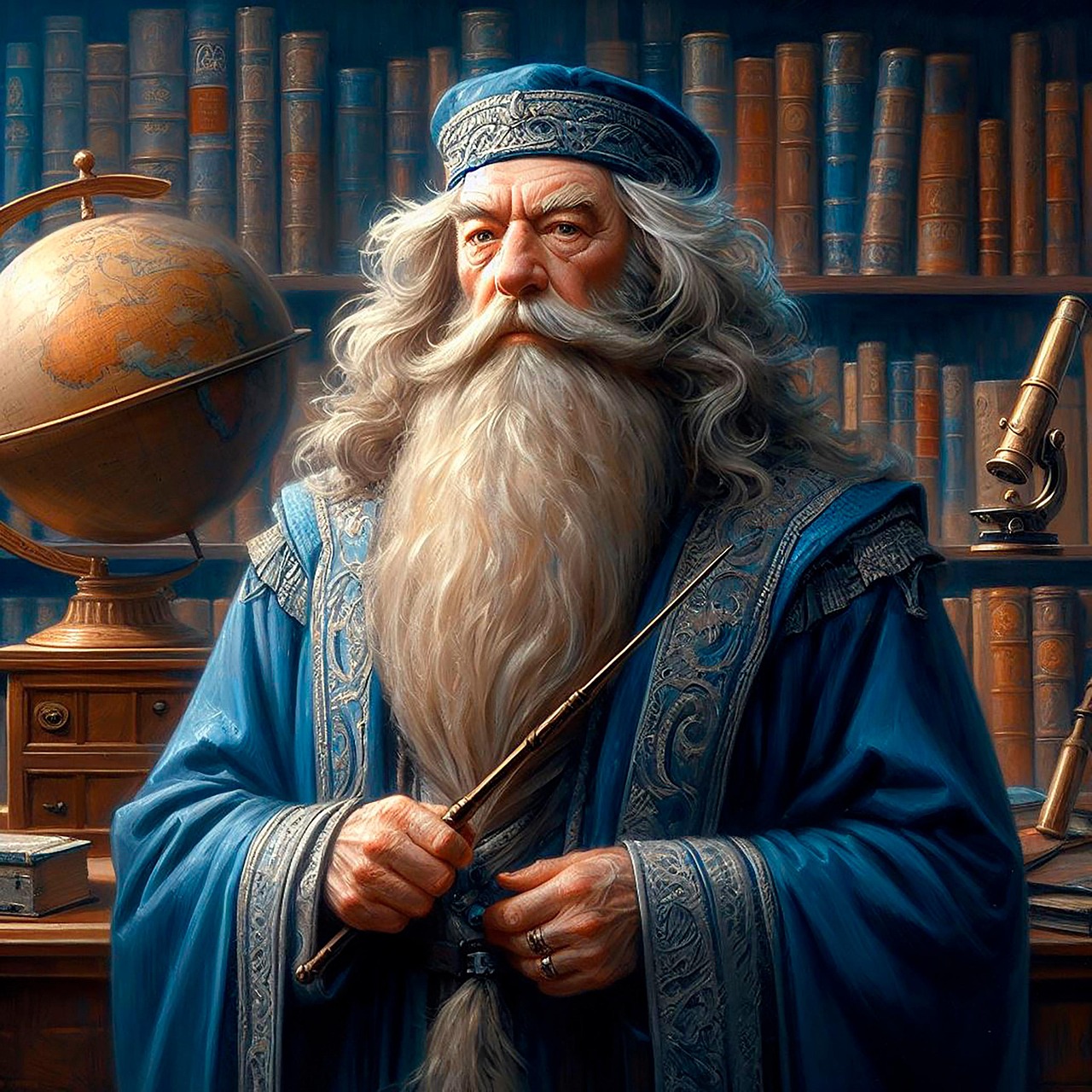 Moral and Ethical Guidance
Moral and Ethical Guidance
- Pope: Provides moral teachings through encyclicals, homilies, and pastoral guidance, aiming to lead Catholics toward righteousness and salvation.
- Wizard: Often serves as a moral compass in stories (e.g., Dumbledore guiding Harry Potter), using wisdom to promote good over evil.
- Similarity: Both act as moral authorities, advising their followers or companions on ethical paths.
- Perceived Supernatural Connection
- Pope: Believed by Catholics to have a divine connection, particularly through apostolic succession and the guidance of the Holy Spirit in matters like papal infallibility (on doctrinal issues).
- Wizard: Portrayed as having a connection to supernatural forces, channeling magic or cosmic energies to achieve extraordinary feats.
- Similarity: Both are seen as intermediaries between the ordinary world and a higher or unseen realm, whether divine or magical.
- Iconic Residences
- Pope: Resides in the Vatican, a sacred and historic enclave, often associated with mystery and grandeur (e.g., the Sistine Chapel, papal apartments).
- Wizard: Often lives in mystical or secluded places, like towers (Merlin), castles (Hogwarts for Dumbledore), or hidden realms.
- Similarity: Both are associated with unique, awe-inspiring locations that enhance their mystique and authority.
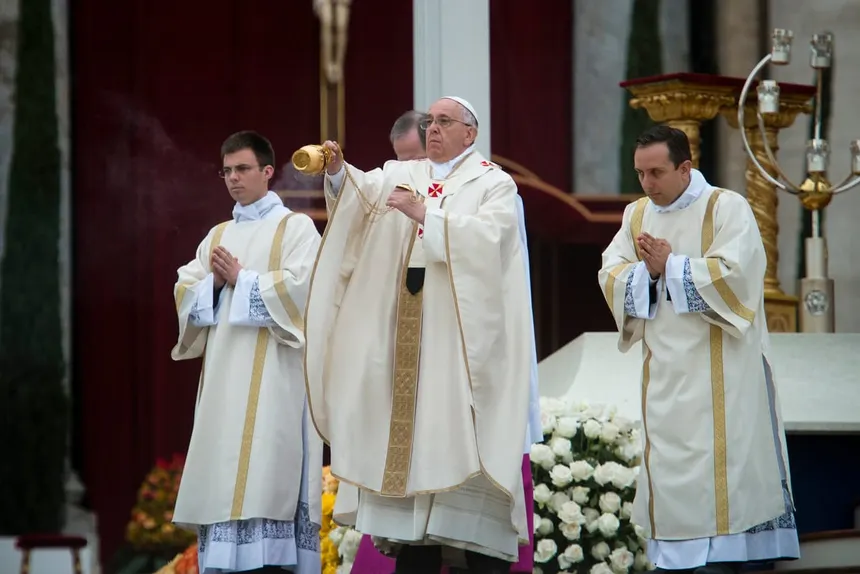 Influence Over Large Communities
Influence Over Large Communities
- Pope: Commands the allegiance of over 1.4 billion Catholics worldwide, shaping global religious and social discourse.
- Wizard: In fictional narratives, wizards often influence entire societies or groups, such as leading resistance against evil (e.g., Gandalf in Middle-earth).
- Similarity: Both wield significant influence, rallying followers or communities toward a common purpose.
- Use of Sacred or Powerful Objects
- Pope: Uses objects like the papal ferula (staff), the Ring of the Fisherman, or sacramentals (e.g., rosaries) in religious contexts, which carry symbolic weight.
- Wizard: Relies on magical tools like wands, staffs, or talismans to channel power or perform feats.
- Similarity: Both employ specialized objects that enhance their roles and are imbued with cultural or spiritual significance.
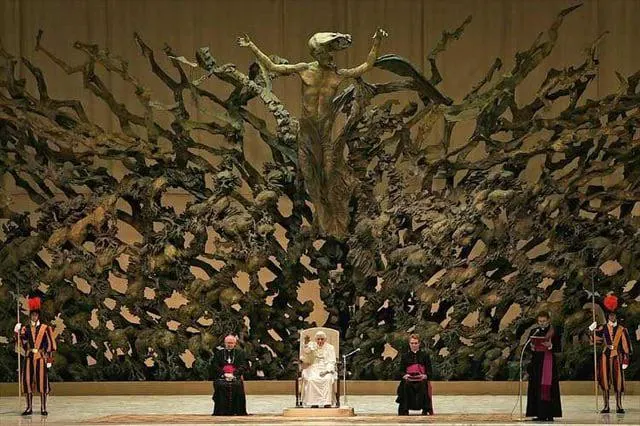 Wise Elders
Wise Elders
- Pope: Often an older figure (e.g., Pope Francis was 76 when elected), valued for wisdom and experience in guiding the Church.
- Wizard: Typically depicted as elderly (e.g., Gandalf, Dumbledore), with age signifying deep knowledge and magical prowess.
- Similarity: Both are archetype-like figures whose age and experience contribute to their revered status.
The Christian Deception:
Most Christians, especially Catholics, will find this comparison inappropriate, or even an offense as they have been told the Pope is a divine messenger of God and his divine role is to carry out the will of the Creator himself. While their thoughts on wizards, sorceress, and Magi are relegated to things of evil or, stranger yet, fiction. As Christianity is a Western religion it is no surprise that this begins at a young age. And what better tool to indoctrinate the next generation than entertainment, allegory, and story telling.
The Image of a TRUE SORCEROR
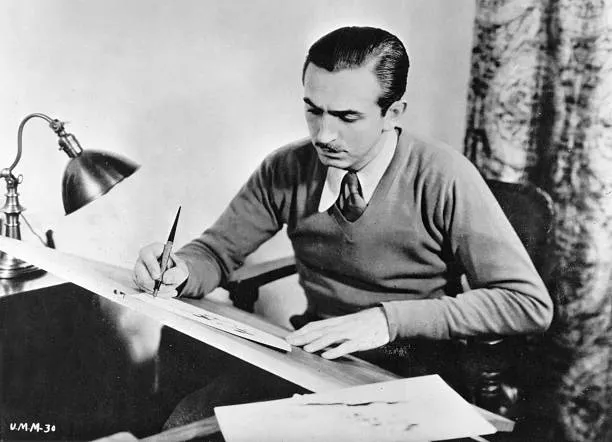
Walt Disney alone is responsible for the modern fictionalized depictions of wizards (Merlin, Harry Potter, Gandalf, etc. This one man has set in stone if you will, alchemically speaking, yes, pun intended, the notion that Magicians/Magi are a thing of fiction and imagination. Furthermore, he has been more than successful at amplifying this revisionism to a point of unquestioned acceptance.
Couple this (non-religious) childhood indoctrination with later religious teachings this child will have concerning the rules, behavior and expected faith and one creates an indoctrinator dutiful fanatic. And yes, I used the word fanatic in it’s original meaning here.
A fanatic is a person who holds extreme, uncompromising, or overly zealous beliefs about their faith, often to the point of irrationality or obsession. They may exhibit intense devotion to religious doctrines, practices, or figures, rejecting alternative views and sometimes resorting to aggressive or extreme actions to defend or promote their beliefs. Religious fanaticism can manifest in rigid adherence to dogma, intolerance of other faiths, or a willingness to sacrifice personal or societal well-being for the sake of their convictions.
This is Only Possible Because the Definition of “Real Magick” has Been Changed From That of the Occulted Sciences to Fictionalized Allegory. Where Upon “Real Magick” has Been Coveted & Managed Through the Education System. Wherein One Can Attend, Earn a Degree, and be Fitted Into a Controlled System. Think, MIT, Stanford University, California Institute of Technology, Tsinghua University, ETH Zurich, Raytheon, Lockheed Martin, Boeing, General Dynamics. And any DAARPA Lab in the United States.
Contemporary Christians have Increasingly Integrated Occult Practices Into Their Daily Lives, While Embracing a Distorted, Revisionist Interpretation of this Knowledge, Often Condemning Those Who Pursue it Beyond the Control of State and Church Authorities.
Monotheism vs THE WORLD
At the end of the day, I believe the truth lies closer to Christianity’s overall two part-goal. 1.) Dominance over their parishioner’s belief system, behavior, and work output (tithings) and 2.) The persecution of EVERY other religion, and not any particular one. This is typical of monotheistic religions such as
- Judaism: Belief in one God, Yahweh, as revealed in the Hebrew Bible.
- Christianity: Worship of one God, often understood as the Trinity (Father, Son, Holy Spirit).
- Islam: Devotion to Allah, the one God, as taught in the Quran.
- Sikhism: Belief in one God, Waheguru, emphasized in the Guru Granth Sahib.
- Zoroastrianism: Worship of Ahura Mazda as the supreme God.
- Baháʼí Faith: Belief in one God, with progressive revelations through prophets.
These are the primary monotheistic religions, a few others have come along, but not many. They define themselves as being the ONE & ONLY TRUE religion from the ONE & ONLY TRUE God. This base doctrine, which is inherent in all monotheistic religions is the impetus for their vilification and aggression towards all other religious systems and the people who follow them.
Of course, Christians will point to the persecution of Christians worldwide and that they themselves are the victims. And, while this is true mainly in Islamic, and communist nations, Christians are pretty safe and enjoy unfettered proselytization worldwide. That is unless they live in an Islamic nation. What Christians fail to realize is that their religion is a hodgepodge of ancient belief systems which were borrowed and incorporated into their collective religious evolution. YES – RELIGIONS EVOLVE. Reformations, anyone? The only modern-day monotheistic religion to not have gone through a reformation is Islam, they are still murdering people in the name of their God. Christians also do it this, however it’s done through the economic machinery of state sponsored warfare.
To be fair, there are many flavors of Christians, and it is most certainly a sliding scale. However, when left to personal anecdotal observation, nearly every non-Christian has at one time or another been at the receiving end of a “believers” religious zeal. These are things Christians have actually told me –
- I will burn in Hell for eternity. By a Christian who never bothered to learn and understand that the Hades – both the God and Realm – they directly refer to, was a Greek construct traceable to the 2nd millennium BC, and is NOT even a Christian theological invention. And when I pressed them on the extension of Hades, meaning Tartarus of course, I was met only with a confused stare.
- That I can only go to their heaven if I say the magic words and believe in their personified Sun God. OH, along with 10% of all my future income.
- That if I keep a dog in my house I am unclean and cannot to be close to the Creator.
- “You and your wife are such nice people, it’s a shame you’re going to perish in hell and burn for eternity.
- That studying the occult will cause demons to descend upon me damn my soul to hell for eternity.
- That they hope very bad things happen to me soon, so that I will realize that it is God’s way of turning me to him, and only then will I truly be able to realize that he is the one true God, convert to Christianity, spread the gospel, and go forth to convert others.
- Of course the JW’s recount me their mythos at my front doorstep regularly. You should see their hope and anticipation of the coming of the end of the world. They often recount the story that man will live with wild creatures in peace and it will be paradise. Of course, this is taken directly from the ancient Mesopotamian texts/mythos, of Dilmun, predating the biblical Genesis account by 3000 years. However, try telling a Christian this.
Still, there are other Christians, Christians I know and love and call my friends and family. These Christians actually live the Christian lifestyle, and by that I mean – they walk the path of Christ (the red letters). They don’t preach fire and brimstone to those they know in an effort to shed their religious convictions upon others.
